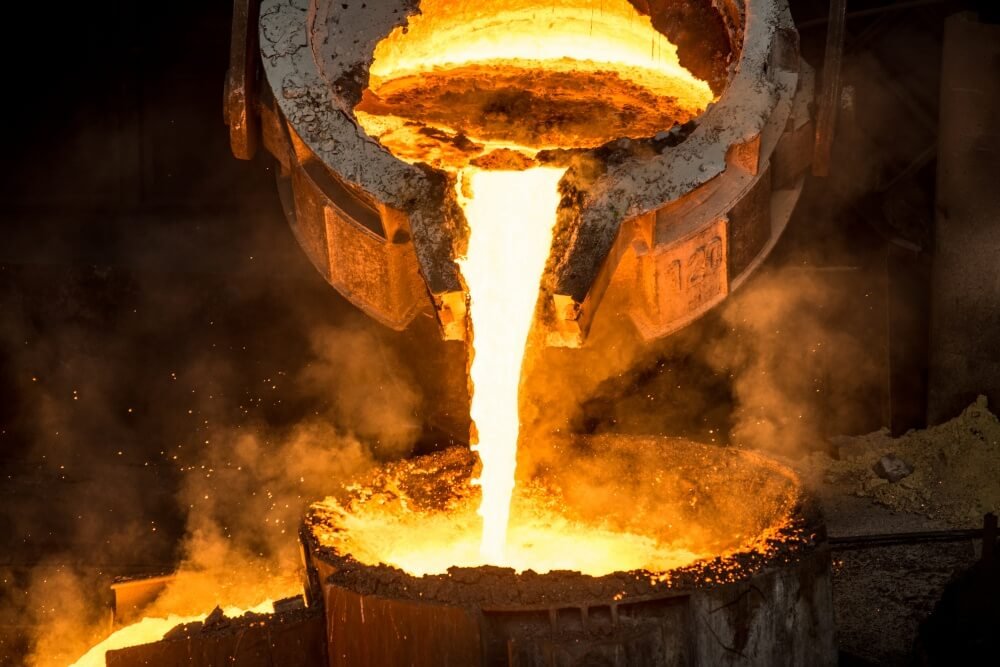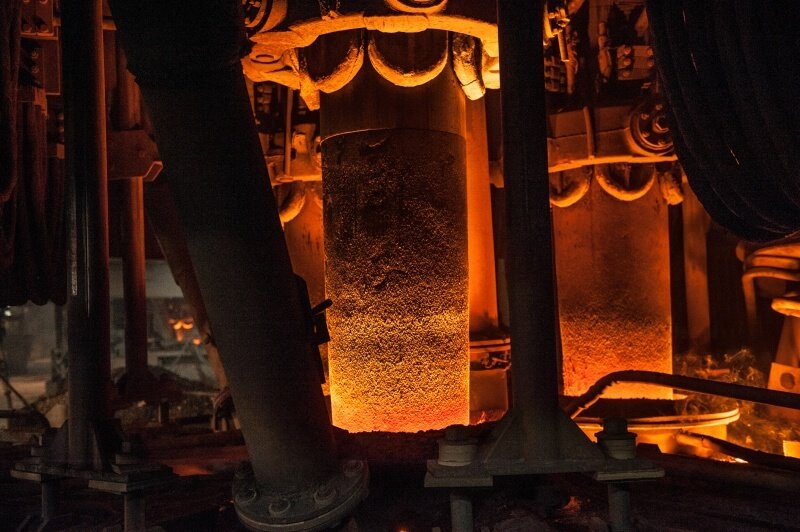Introduction: The aluminium alloy casting solution
Your program requires complex, lightweight, corrosion-resistant metal parts, yet traditional machining is too slow and costly to sustain volume. Without an efficient route, budgets slip, schedules drift, and components miss weight and performance targets—eroding your advantage. This guide shows how aluminium alloy casting delivers a versatile, near-net-shape solution, enabling high-quality parts at speed and cost you can forecast, from prototype through scale.

The basics of aluminium alloy casting
What is aluminum casting?
Aluminum casting is a manufacturing process where you introduce molten aluminum into a mold or cavity to create a part. Its effectiveness relies on aluminum’s low melting point and excellent viscosity when liquid, allowing it to fill intricate shapes before cooling into a strong, solid component. The process is foundational to modern manufacturing.
- Melt aluminum alloy into a liquid state.
- Pour the molten metal into a pre-shaped mold.
- Allow the metal to cool and solidify.
- Eject the final, near-net-shape part.
Here’s the deal… this simple sequence allows for complex part creation.
Why is casting so important?
Casting is vital for creating complex, net-shape parts in a single step, transforming liquid metal directly into a finished product. This capability is indispensable for industries where weight, complexity, and cost are critical design drivers. Its efficiency supports mass production and enables designs that would be impossible or prohibitively expensive to machine.
- Aerospace and Defense
- Automotive
- Consumer Products
- Medical and Dental
But why does that matter to you? It means you can produce optimized parts faster and more affordably.
Key Takeaway: Casting offers unparalleled strategic value by efficiently producing complex, lightweight components at scale.
| Manufacturing Process | Part Complexity | Production Speed | Unit Cost (High Vol.) |
|---|---|---|---|
| Aluminum Casting | High | Fast | Low |
| CNC Machining | High | Slow | High |
| Forging | Low | Moderate | Moderate |
This comparison shows why casting is a foundational technology for high-volume production of intricate parts.
Properties of aluminium alloy casting
What are its general properties?
Cast aluminum parts are valued for their excellent strength-to-weight ratio, corrosion resistance, and high thermal and electrical conductivity. You’ll almost always use an aluminum alloy, not pure aluminum, to enhance specific properties like strength or ductility for your application. These engineered alloys provide the versatility needed for diverse industrial uses.
- Strength-to-Weight Ratio: High strength with low density.
- Corrosion Resistance: Naturally forms a protective oxide layer.
- Conductivity: Excellent for thermal and electrical applications.
- Ductility: Can be formed without fracturing, though less than pure aluminum.
You might be wondering… how these properties translate to performance.
How strong is cast aluminum?
The strength of a cast aluminum part depends heavily on the specific alloy, the casting process used, and the level of porosity. While pure aluminum is soft with a tensile strength around 90 MPa, casting alloys can achieve strengths of 221 MPa or more. Proper process control and alloy selection are critical for meeting mechanical requirements.
- Alloy composition (e.g., Al-Si, Al-Cu).
- Casting method (e.g., die casting vs. sand casting).
- Presence of porosity or inclusions.
- Post-processing heat treatments.
Let’s break it down. Your choice of alloy is the most critical factor influencing final part strength.
Key Takeaway: Alloy selection is the single most important decision you will make to achieve the desired part strength.
| Material Type | Typical Tensile Strength (MPa) |
|---|---|
| Pure Aluminum | ~90 MPa |
| Common Casting Alloy | ~221+ MPa |
| Forged Aluminum | ~290+ MPa |
This data guides you to select an alloy and process based on the mechanical stresses your part must endure.
The durability of aluminium alloy casting
How durable are the parts?
Cast aluminum parts can be extremely durable, often lasting for decades when designed correctly. Durability depends on mitigating weaknesses like stress cracking, creep, and abrasion by carefully planning part geometry and load paths. Smart design is essential to exploit the material’s strengths and ensure long-term performance.
- Incorporate generous radii to reduce stress concentrations.
- Design for compressive loads where possible.
- Avoid sharp corners and abrupt changes in wall thickness.
- Consider surface treatments for high-wear applications.
But there’s a catch. Durability is not inherent; it must be engineered into the design.
Is it resistant to heat?
Yes, but its heat resistance varies significantly between alloys, creating a trade-off between performance and castability. Al-Si alloys cast exceptionally well but have a lower service temperature, while Al-Cu alloys can withstand higher heat but are more challenging to cast. You must select an alloy based on the thermal environment your part will face.
- Al-Si Alloys: Up to ~180 °C.
- Al-Cu Alloys: Up to ~350 °C.
- Al-Mg Alloys: Intermediate temperature performance.
What does this mean for your project? You have to balance heat resistance needs with manufacturing feasibility.
Key Takeaway: There is a direct trade-off between an alloy’s heat resistance, its strength, and its ease of casting.
| Alloy Family | Max Service Temp. | Castability |
|---|---|---|
| Al-Si | ~180 °C | Excellent |
| Al-Cu | ~350 °C | Fair |
| Al-Mg | Intermediate | Good |
This table helps you make an informed decision when high operating temperatures are a primary design constraint.
Reusable mold aluminium alloy casting
What is die casting?
Die casting is a high-volume process that uses hardened steel, two-part molds to produce parts with excellent precision and surface finish. Molten aluminum is forced into the mold under high pressure, enabling rapid cycle times and making it ideal for automation. These robust tools can have a life of over 100,000 shots.
- Speed: Very fast cycle times for mass production.
- Cost: High initial tooling cost, but low per-part cost.
- Precision: Creates highly accurate, complex parts.
- Automation: Easily integrated into automated production lines.
Think about it this way… die casting is the go-to method for automotive-scale production.
What is permanent mold casting?
This process is similar to die casting, as it also uses a reusable steel mold, but metal is typically poured using gravity instead of high pressure. It is better suited for lower-to-medium production volumes where the high tooling cost of die casting is not justifiable. It offers a good balance between the low cost of sand casting and the high precision of die casting.
- Lower production volumes than die casting.
- Moderate tooling costs.
- Good dimensional accuracy and surface finish.
- Slower cycle times due to gravity-fed pouring.
So, what’s the difference? It comes down to production volume and budget.
Key Takeaway: The core trade-off between die casting and permanent mold casting is balancing your production volume against the initial tooling investment.
| Feature | Die Casting | Permanent Mold Casting |
|---|---|---|
| Production Volume | High (100k+ parts) | Low to Medium |
| Tooling Cost | High | Moderate |
| Pouring Method | High-Pressure | Gravity-Fed |
| Part Complexity | Very High | High |
This comparison makes it clear that die casting is ideal for high-volume runs, while permanent mold is better for smaller batches.
Sacrificial mold aluminium alloy casting
What is investment casting?
Known as the “lost wax” process, you start by creating a wax or 3D printed pattern of your part. This pattern is coated in a ceramic slurry to form a shell, which is then heated to melt or burn out the pattern, leaving a perfect cavity. It is the ideal choice for producing parts with extreme complexity or fine detail.
- Create a wax or plastic pattern.
- Build a ceramic shell around the pattern.
- Melt or burn the pattern out of the shell.
- Pour molten aluminum into the resulting ceramic mold.
This is where it gets interesting. The sacrificial pattern allows for unparalleled geometric freedom.
How does sand casting work?
In sand casting, you create a mold by packing sand mixed with a binder around a reusable pattern. Once the pattern is removed, the sand holds the shape of the cavity, into which you pour molten aluminum. This method is highly versatile and cost-effective for very large parts, prototypes, and low-volume production runs.
- Pros: Low tooling cost, suitable for large parts.
- Cons: Slower process, rougher surface finish.
- Flexibility: Excellent for simple shapes and prototyping.
But is it right for you? It’s a great choice if you need a large part or only a few copies.
What is lost foam casting?
Lost foam casting is a variation where the pattern is made from a polymer foam that is left in the mold. When you pour in the molten aluminum, the foam instantly vaporizes, and the metal fills the space it occupied. This eliminates the need for a two-part mold and the step of removing the pattern before casting.
- Simplified process with no pattern removal.
- Allows for complex internal geometries.
- Reduces the need for cores and binders.
Here’s a simpler alternative. It’s a streamlined process for certain complex shapes.
Key Takeaway: Lost foam casting simplifies the manufacturing process by having the pattern vaporize upon contact with the metal, removing a step.
| Feature | Investment Casting | Sand Casting | Lost Foam Casting |
|---|---|---|---|
| Surface Finish | Excellent | Fair | Good |
| Complexity | Very High | Moderate | High |
| Tooling Cost | Moderate | Low | Low |
This table helps you select a sacrificial process based on your needs for surface quality, part complexity, and budget.
Advanced aluminium alloy casting techniques
What is shell mold casting?
Shell mold casting is an evolution of sand casting that gives you a better surface finish and higher accuracy. You use resin-coated sand to form a thin, strong shell mold around a heated pattern. This process is ideal for medium-volume, higher-precision parts that need to be better than sand castings but don’t require the expense of investment casting.
- Improved dimensional accuracy over sand casting.
- Better surface finish reduces machining needs.
- Faster production cycles for medium volumes.
Ready for an upgrade? Shell molding bridges the gap between sand and investment casting.
What is vacuum die casting?
In this advanced die casting method, you use a vacuum to pull molten metal into the mold cavity. This process significantly reduces gas porosity, a common defect that can weaken parts. The result is a denser, stronger component with superior mechanical properties suitable for structural or mission-critical applications.
- Minimizes gas porosity and inclusions.
- Results in higher-density parts.
- Improves strength and pressure tightness.
The result? A higher-quality part that you can trust for demanding applications.
How does centrifugal casting work?
Centrifugal casting uses a spinning mold to distribute molten aluminum via centripetal force. This force packs the metal against the mold walls, creating extremely dense, fine-grained parts free of porosity. It is especially effective for creating components with rotational symmetry, such as tubes or rings, with superior strength.
- Pipes and tubes
- Rings and flanges
- Bushings and sleeves
This might surprise you. The force creates material properties that are hard to achieve with other methods.
Key Takeaway: Centrifugal casting yields superior material density and strength, making it invaluable for high-performance symmetrical parts.
| Technique | Key Advantage | Best For |
|---|---|---|
| Shell Mold Casting | Better finish & accuracy | Medium-volume, higher-precision parts |
| Vacuum Die Casting | Minimal porosity | Structural, mission-critical components |
| Centrifugal Casting | Highest density/strength | Parts with rotational symmetry |
Use this guide to decide when to invest in these premium processes for your most critical applications.
Applications for aluminium alloy casting
Where is it used in automotive?
In the automotive industry, aluminum casting is essential for manufacturing lightweight components that improve fuel efficiency and performance. You’ll find cast aluminum parts throughout a modern vehicle, from the powertrain to the chassis. The process allows for the creation of complex, optimized shapes that reduce vehicle weight without sacrificing strength.
- Transmission housings
- Engine blocks and cylinder heads
- Pistons
- Steering knuckles and suspension components
Let’s look under the hood. Its use is a key strategy for vehicle lightweighting.
What about consumer products?
You encounter cast aluminum parts every day in a wide range of consumer products. The process is used to create durable, lightweight, and aesthetically pleasing components for everything from kitchen tools to outdoor equipment. Its corrosion resistance and ability to be cast into intricate shapes make it a popular choice.
- Cookware (pots and pans)
- Lawnmower decks
- Power tool housings
- Patio furniture frames
Look around your home. Cast aluminum is more common than you think.
How is it used in medical devices?
In the medical field, aluminum casting provides the precision, durability, and cleanability required for many devices. You can use it to create complex housings for electronic equipment or ergonomic handles for surgical tools. The ability to produce strong, lightweight parts with high dimensional accuracy is critical for these applications.
- Surgical tool handles
- Monitor housings and components
- Hospital bed gearboxes and structural parts
The bottom line is clear. Casting meets the strict demands of various industries.
Key Takeaway: The versatility of aluminum casting makes it a go-to manufacturing process across nearly every major industry.
| Industry | Primary Casting Process Used |
|---|---|
| Automotive | Die Casting |
| Aerospace | Investment Casting |
| Consumer Goods | Die & Permanent Mold |
| Industrial | Sand Casting |
The wide adoption of aluminum casting is driven by its exceptional balance of cost, speed, and performance characteristics.
The benefits of aluminium alloy casting
What are the main advantages?
Aluminum casting allows you to produce complex, durable, and lightweight parts with high precision and excellent corrosion resistance. It supports high-volume, automated production, making it a cost-effective solution for manufacturing at scale. The material’s high thermal and electrical conductivity also opens up a wide range of functional applications.
- High strength-to-weight ratio.
- Ability to create complex, near-net-shape parts.
- Excellent corrosion resistance.
- High thermal and electrical conductivity.
- Good machinability for secondary operations.
So, what are the key takeaways? It offers a powerful combination of benefits.
Key Takeaway: The primary benefit of aluminum casting is its ability to produce complex, near-net-shape parts efficiently at scale.
| Benefit | Business Impact |
|---|---|
| High Strength-to-Weight | Lighter products, improved fuel efficiency |
| Complex Geometries | Part consolidation, reduced assembly |
| High Production Speed | Lower unit costs, faster time-to-market |
| Corrosion Resistance | Increased product lifespan, lower maintenance |
These benefits combine to lower the total cost of ownership and improve the performance of your final product.
Limitations of aluminium alloy casting
What are the main disadvantages?
While highly versatile, you must be aware of its limitations, such as its moderate resistance to fatigue and abrasion. Cast aluminum is not suitable for direct-use bearing surfaces and some alloys are vulnerable to high temperatures. These factors must be addressed in the design phase to prevent premature failure.
- Moderate fatigue and abrasion resistance.
- Unsuitable for use as a bearing surface.
- Temperature vulnerabilities in certain alloys.
- Potential for porosity if not controlled.
But it’s not a silver bullet. You need to design around its inherent weaknesses.
Key Takeaway: These limitations are not deal-breakers; they are critical design considerations that must be addressed to ensure part success.
| Limitation | Design Mitigation Strategy |
|---|---|
| Moderate Fatigue Resistance | Use generous radii; avoid stress concentrations. |
| Poor Abrasion Resistance | Incorporate hardened inserts or surface coatings. |
| Temperature Sensitivity | Select a high-temperature alloy (e.g., Al-Cu). |
| Porosity Risk | Use vacuum casting; design for uniform cooling. |
Smart design and process engineering can successfully overcome most of these challenges.
Conclusion
Aluminum casting effectively solves the challenge of manufacturing complex, lightweight parts cost-effectively, bridging the gap between design ambition and production reality. At Precisionvast, we connect you with a vast network of manufacturing capabilities, including a wide range of aluminum casting services to meet your specific project needs. Whether you’re prototyping or moving to high-volume production, we have the expertise to deliver. Request a free quote today or contact a Precisionvast expert to discuss your project.
FAQ
- Can I use 3D printing in aluminum casting? Yes, but indirectly. 3D printing is excellent for creating complex sacrificial patterns for investment and lost foam casting, which accelerates development and enables geometries impossible with traditional tooling.
- What’s the best casting type for my project? It depends on four factors: production volume, part complexity, budget, and required surface finish. For high volumes, use die casting. For large prototypes, use sand casting. For intricate, high-value parts, use investment casting.
- Is cast aluminum just pure aluminum? Rarely. “Cast aluminum” almost always refers to specific aluminum alloys engineered with elements like silicon or copper to enhance properties like strength, fluidity, and corrosion resistance for casting processes.
- Is cast or forged aluminum better? They excel at different things. Forging produces mechanically stronger, denser parts ideal for high-stress applications like connecting rods. Casting is superior for creating complex, intricate, near-net-shape components like transmission housings.
- How long will my cast aluminum parts last? Potentially for decades. When designed correctly for its operating environment and load conditions, cast aluminum is highly durable and can remain fully functional for over 50 years, as seen in many automotive components.




